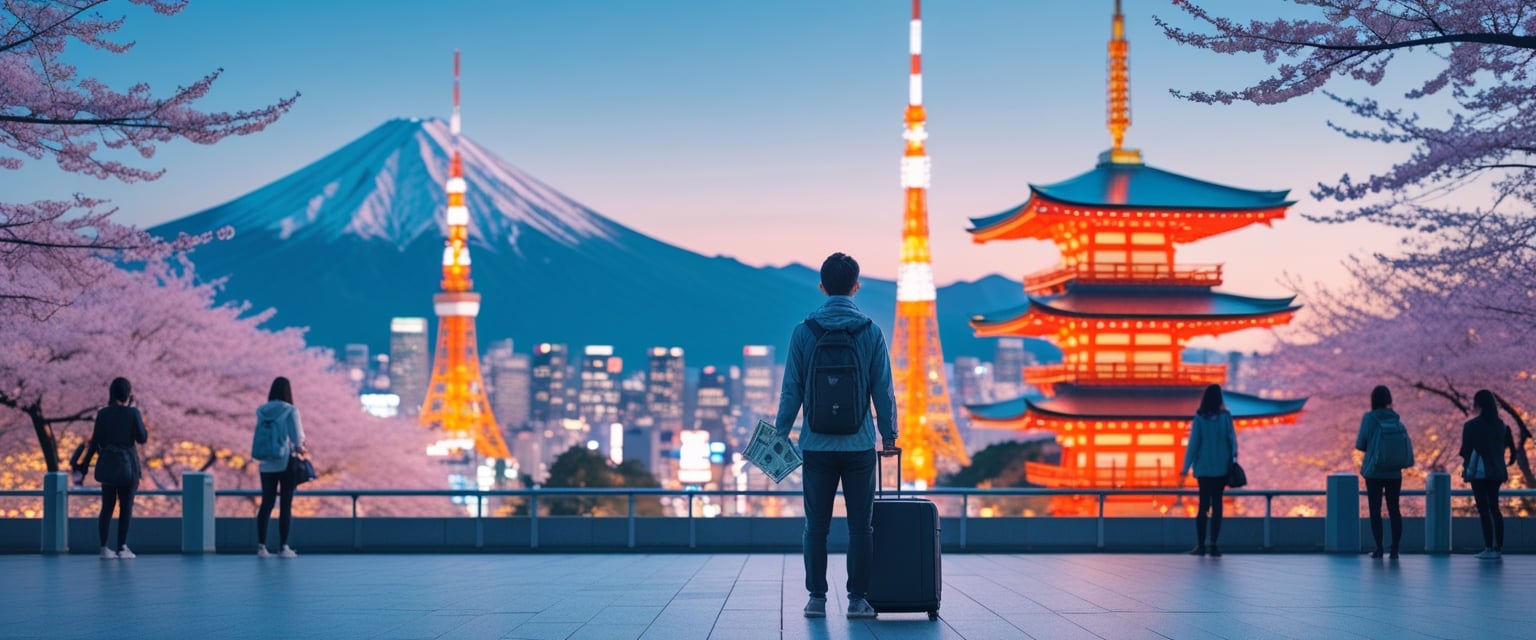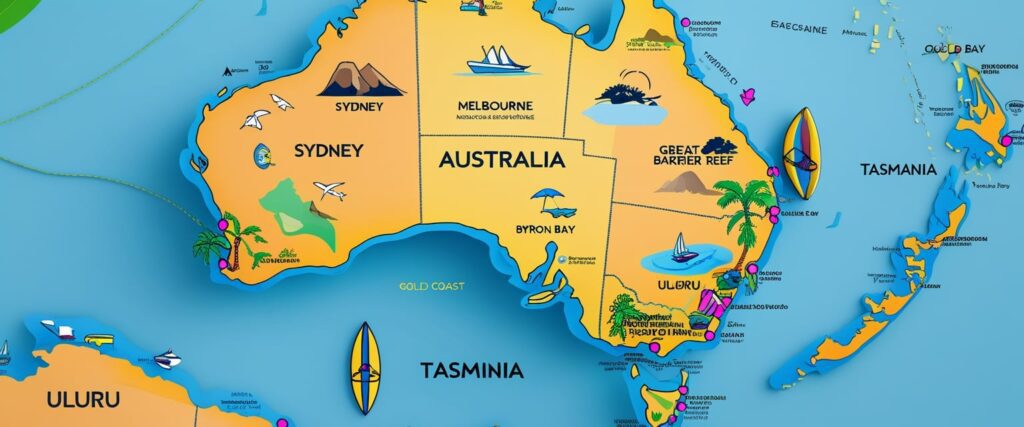Yes, $5000 can absolutely cover a memorable Japan trip if you plan strategically. Whether it’s enough depends on your trip duration, travel style, and smart budgeting decisions. Our comprehensive analysis shows that with proper planning, $5000 can fund anything from a luxurious 7-day adventure to an extended 14-day journey with careful spending.
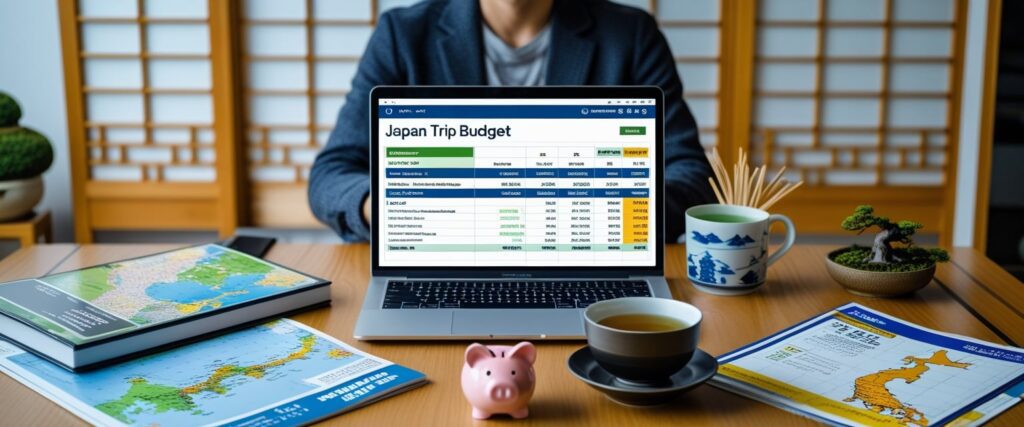
Table of Contents
Is $5000 Enough for Japan? The Ultimate Budget
Planning a trip to Japan is an exciting dream for many travelers, but budgeting can feel overwhelming. One of the most common questions people ask is, “Is $5000 Enough for a Trip to Japan?” The answer depends on your travel style, how long you’re staying, and the experiences you want to enjoy. Japan is a destination that offers something for every budget—from affordable hostels and street food to luxury hotels and fine dining.
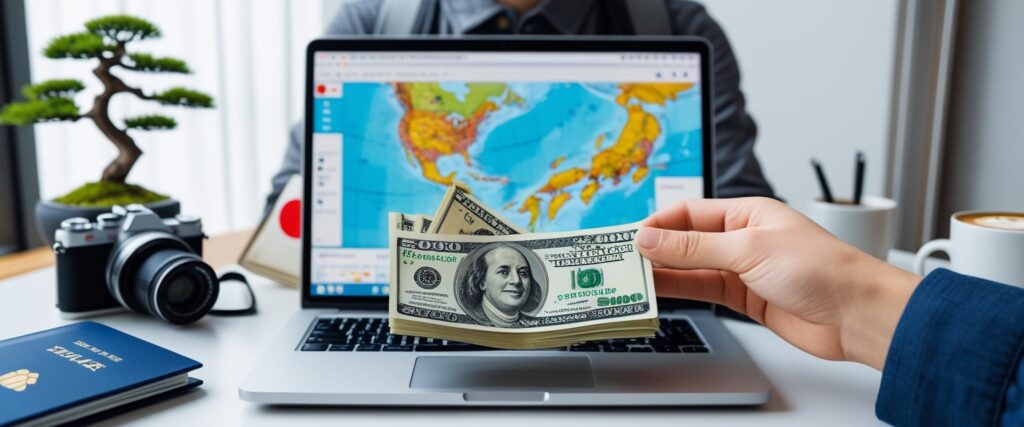
Understanding Your $5000 Japan Budget Potential
Trip Duration Possibilities
Your $5000 budget can realistically cover:
- 7-10 days of comfortable mid-range travel with quality accommodations and dining experiences
- 10-14 days of budget-conscious travel mixing hostels with business hotels
- 14-21 days of ultra-budget backpacker style using capsule hotels and convenience store meals
Recent traveler reports confirm that couples have successfully completed 14-day Japan trips spending $4,750-$6,500 combined, making $5000 feasible for solo travelers planning similar duration trips.
Detailed Cost Breakdown: Making Every Dollar Count
Flight Costs: Your Biggest Variable (20-30% of Budget)
Budget Allocation: $600-$1,200
Flight prices fluctuate dramatically based on several factors:
- Origin location: US East Coast ($700-$1,000), West Coast ($500-$800), Europe (€600-€1,200)
- Season timing: Low season (January-February, June, September) offers 30-50% savings
- Booking strategy: Purchase 3-6 months ahead for optimal pricing
- Route flexibility: Consider stopovers via Istanbul or Doha to save $150-$250
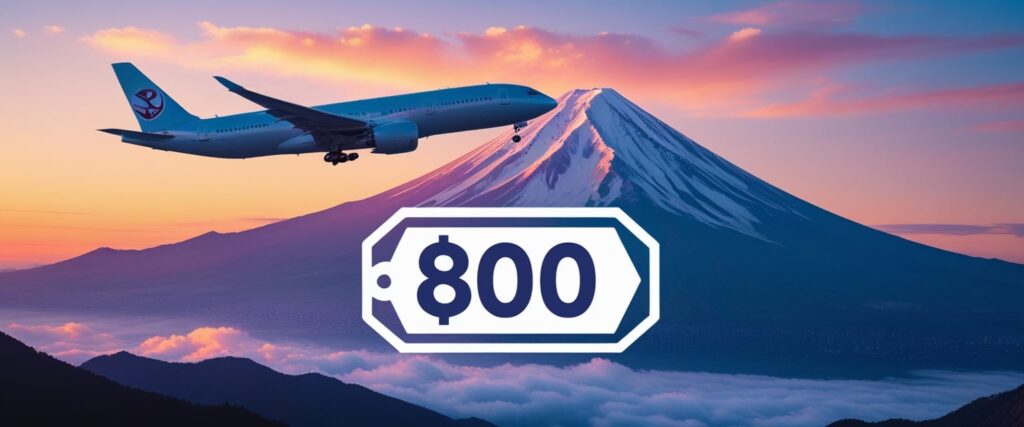
Pro tip: Set price alerts and monitor flash sales. Travelers have secured round-trip flights for as low as $300 during promotional periods.
Accommodation: Strategic Comfort vs. Cost (25-35% of Budget)
Budget Allocation: $700-$1,750 (for 14 days)
Japan’s accommodation landscape offers unique budget-friendly options often overlooked in typical guides:
Business Hotels: The Sweet Spot
- Cost: ¥6,000-¥15,000 ($40-$100) per night
- Value: Private room, bathroom, free breakfast, excellent location near stations
- Best for: Solo travelers and couples seeking comfort without luxury pricing
Strategic Hostel Selection
- Cost: ¥3,000-¥8,000 ($20-$50) per night
- Modern Japanese hostels: Exceptionally clean with concierge-level service
- Hidden benefit: Many include kitchens for additional food savings
Capsule Hotels: More Than a Novelty
- Cost: ¥5,000-¥10,000 ($34-$67) per night
- Modern amenities: Individual pods with TV, AC, blackout curtains
- Added value: Often include high-quality communal baths and lounges
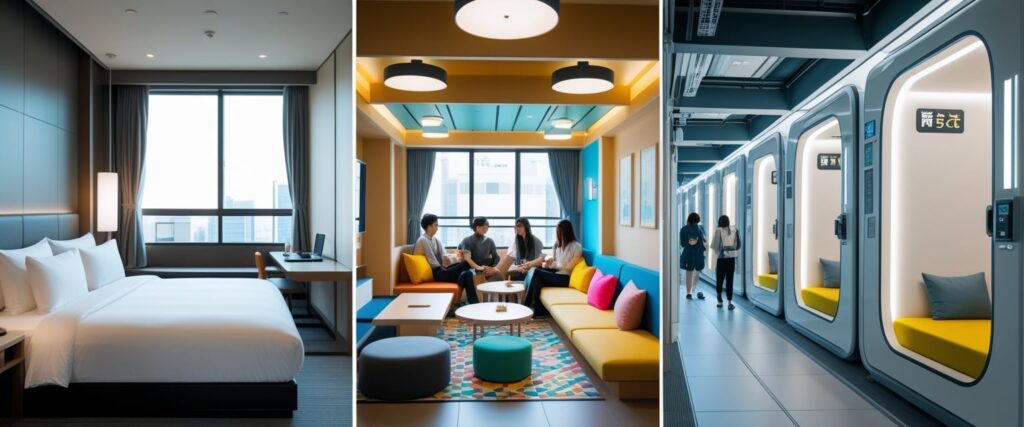
Transportation: Smart Pass Decisions (15-25% of Budget)
Budget Allocation: $300-$1,250
The 2023 JR Pass price increase fundamentally changed transportation budgeting. Here’s what current travelers need to know:
JR Pass Reality Check 2025
- 7-day pass: ¥50,000 ($326) – requires extensive intercity travel to break even
- Break-even point: Need 2+ round trips between major cities within 7 days
- Alternative calculation: Tokyo-Kyoto round trip costs ¥26,640 ($174) individually
Budget-Smart Transportation Alternatives
Regional Passes for Targeted Travel:
- Kansai Wide Pass: ¥12,000 ($78) for 5 days covering Kyoto-Osaka-Nara
- Tokyo Wide Pass: ¥10,000 ($65) for 3 days including Mt. Fuji access
Highway Buses: The Budget Hero:
- Cost: ¥5,000-¥7,000 ($33-$46) for overnight Tokyo-Kyoto trips
- Double savings: Transportation + accommodation for one night
- Willer Express passes: 7-day unlimited travel for ¥15,300 ($100)
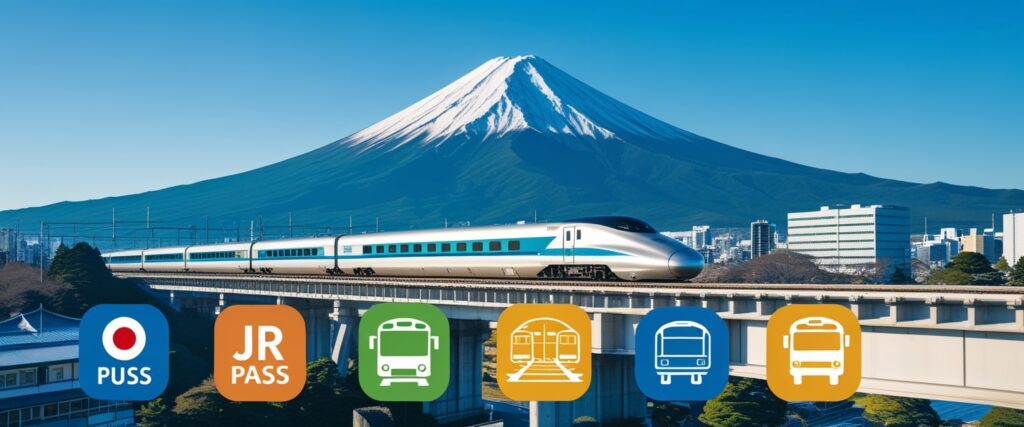
Food: Eating Well Without Breaking Bank (20-30% of Budget)
Budget Allocation: $350-$980 (for 14 days)
Japan’s food scene offers incredible value if you know where to look:
Convenience Store Strategy
- Cost: $3-$8 per meal
- Quality: Restaurant-level prepared meals, fresh ingredients
- Variety: Regional specialties available nationwide
- Savings tip: Shop after 8 PM for 50% discounts on fresh items
Local Dining Gems
- Ramen shops: ¥500-¥1,200 ($3-$8) for filling meals
- Standing sushi bars: ¥100-¥300 ($1-$2) per piece
- Department store basement food courts: High-quality meals ¥1,000-¥2,500 ($7-$17)
100-Yen Store Revolution
- Essential items: Meal kits, snacks, toiletries at fixed $0.70 pricing
- Local tip: Ask for “Hyaku En” stores – available throughout Japan
Activities and Experiences: Free vs. Paid Balance (10-15% of Budget)
Budget Allocation: $200-$750
Japan offers an exceptional ratio of free to paid attractions:
Free Experiences (Covering 70% of Must-See Attractions)
- Tokyo: Shibuya Crossing, Imperial Palace, Senso-ji Temple, Ueno Park
- Kyoto: Fushimi Inari Shrine, Arashiyama Bamboo Grove, Gion district exploration
- Universal: Most temples and shrines, traditional festivals, hiking trails
Paid Experiences Worth the Investment
- Temple entry fees: ¥300-¥500 ($2-$3) for major sites like Golden Pavilion
- Museums: ¥500-¥1,500 ($3-$10) for most attractions
- Unique experiences: Hedgehog cafes (¥1,400/$9), Snow Monkey Park (¥800/$5)
Regional Budget Strategies: Where Your Money Goes Furthest
Tokyo: Expensive but Efficient
- Daily budget: $80-$150 (mid-range comfort)
- Money-saving base: Stay in Asakusa or Ueno for lower accommodation costs
- Free observation: Tokyo Metropolitan Government Building for skyline views
Kyoto: Cultural Value Champion
- Daily budget: $70-$120 (including temple visits)
- Bicycle rental: ¥500-¥1,000 ($3-$6) daily for efficient temple-hopping
- Free cultural experiences: Imperial Palace guided tours, traditional district walking
Osaka: Food Paradise on Budget
- Daily budget: $60-$100 (including food focus)
- Street food capital: Takoyaki and okonomiyaki from ¥300-¥600 ($2-$4)
- Budget accommodation: More options than Tokyo at 20-30% lower prices
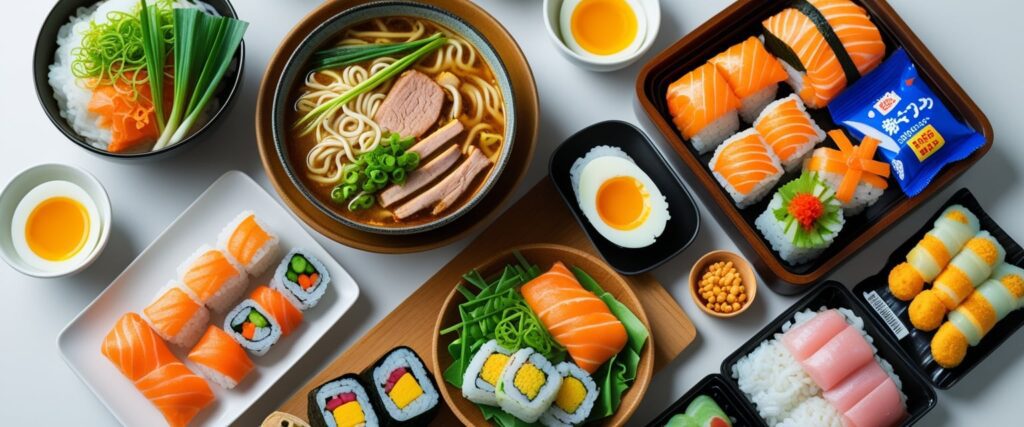
Seasonal Budget Optimization: When to Travel Smart
Low Season Sweet Spots
- January-February: 30-50% accommodation savings, fewer crowds
- June (Rainy season): Lower prices despite weather concerns
- September: Post-summer pricing with good weather
Shoulder Season Balance
- Early December: Good weather, reasonable prices, illumination season
- Mid-late May: Post-Golden Week pricing, pleasant temperatures
Sample Budget Breakdowns: Three Approaches
7-Day Comfort Trip ($5,000)
- Flights: $800
- Accommodation: $800 (business hotels)
- Transportation: $400 (regional passes + local transport)
- Food: $490 ($70/day mix of restaurants and convenience)
- Activities: $350 (major attractions + one special experience)
- Shopping/Miscellaneous: $260
- Emergency buffer: $900
10-Day Balanced Trip ($5,000)
- Flights: $700
- Accommodation: $900 (hostel/business hotel mix)
- Transportation: $600 (strategic pass usage)
- Food: $600 ($60/day)
- Activities: $400
- Shopping/Miscellaneous: $300
- Emergency buffer: $500
14-Day Budget Adventure ($5,000)
- Flights: $600
- Accommodation: $980 (hostels + capsule hotels)
- Transportation: $700 (bus passes + regional trains)
- Food: $840 ($60/day convenience + occasional restaurants)
- Activities: $280 (focus on free attractions)
- Shopping/Miscellaneous: $200
- Emergency buffer: $400
Advanced Money-Saving Strategies
Technology Leverage
- IC Cards (Suica/Pasmo): Small purchase discounts, simplified transactions
- Mobile apps: Hyperdia for train planning, offline maps for walking navigation
- City tourist apps: Digital coupons and free experience notifications
Cultural Immersion Savings
- Couchsurfing: Free accommodation with local insights
- Home cooking: Hostel kitchen usage combined with supermarket shopping
- Festival timing: Free cultural experiences throughout the year
Transportation Hacks
- Hitchhiking: Safe and culturally acceptable for foreign tourists
- Night buses: Double as accommodation and transportation
- Walking combination: Many attractions within walking distance when grouped strategically
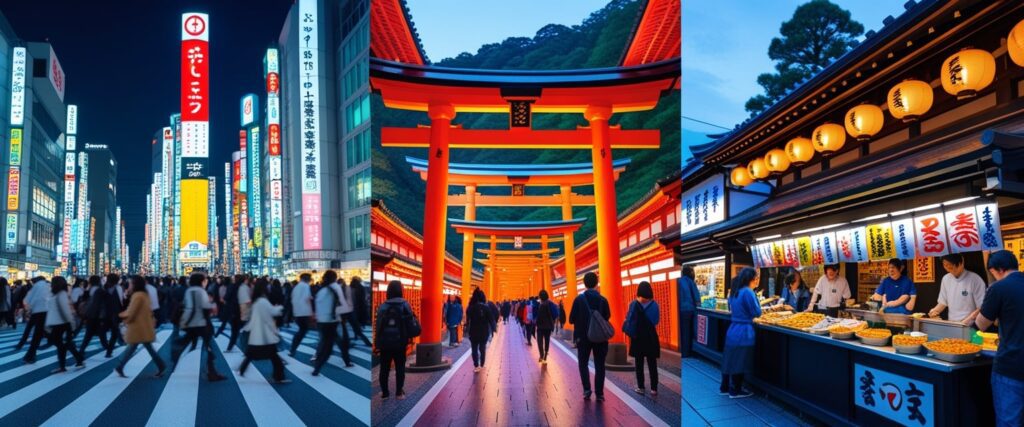
Common Budget Pitfalls to Avoid
Overestimating Transport Needs
Many travelers buy expensive rail passes for limited intercity travel. Calculate individual ticket costs first before committing to passes.
Underestimating Cash Requirements
Japan remains largely cash-based. Budget for ¥10,000 ($67) emergency cash and use 7-Eleven ATMs for best exchange rates.
Peak Season Booking
Cherry blossom season (March-April) can inflate costs by 200-300%. Consider alternative seasons for better value.
Overplanning Activities
Many of Japan’s best experiences are free. Don’t over-budget for paid attractions while missing free cultural immersion opportunities.
Conclusion
Is $5000 Enough for Japan? The Ultimate Budget is one of the most common questions travelers ask before planning their dream trip. The answer is yes—$5000 can absolutely cover a memorable Japan journey if you plan strategically. Whether it’s enough depends on your trip duration, travel style, and smart budgeting. Our comprehensive analysis shows that with proper planning, $5000 can fund anything from a luxurious 7-day adventure to an extended 14-day journey with careful spending. For those searching for a clear Japan travel budget 2025, this guide breaks down every cost in detail.
Frequently Asked Questions
Q: Is $5000 enough for a couple’s trip to Japan?
A: For couples, $5000 would cover a comfortable 7-day trip or a budget-conscious 10-day journey. Shared accommodation costs make couple travel more economical than solo travel on a per-person basis.
Q: What’s the minimum daily budget for Japan in 2025?
A: Ultra-budget travelers can survive on $50-$70 daily using hostels, convenience store meals, and free attractions. Comfortable budget travel requires $80-$120 daily.
Q: Should I get the JR Pass with a $5000 budget?
A: Only if visiting 4+ cities with extensive intercity travel. For most itineraries focusing on 2-3 regions, regional passes or individual tickets offer better value.
Q: Can I eat well in Japan on a tight food budget?
A: Absolutely. Convenience stores, ramen shops, and supermarket prepared meals offer excellent quality at $20-$40 daily. Evening supermarket discounts provide restaurant-quality meals at 50% off.
Q: What’s the best time to visit Japan on a budget?
A: January-February and June offer the best budget opportunities with 30-50% accommodation savings and fewer crowds, though weather considerations apply.
Q: How much should I budget for shopping and souvenirs?
A: Budget 10-15% of your total trip cost for shopping. Japan’s 100-yen stores offer quality souvenirs, while electronics and cosmetics provide good value for money.
